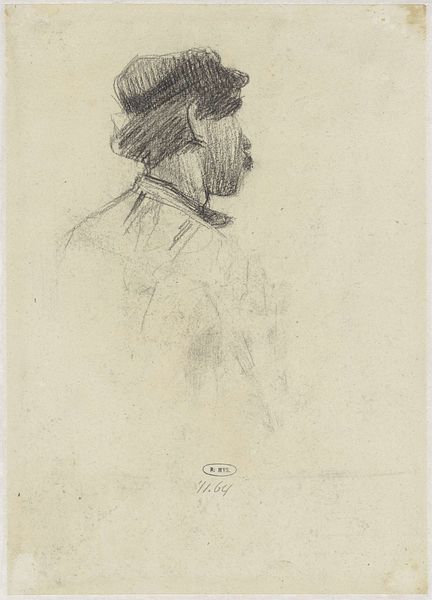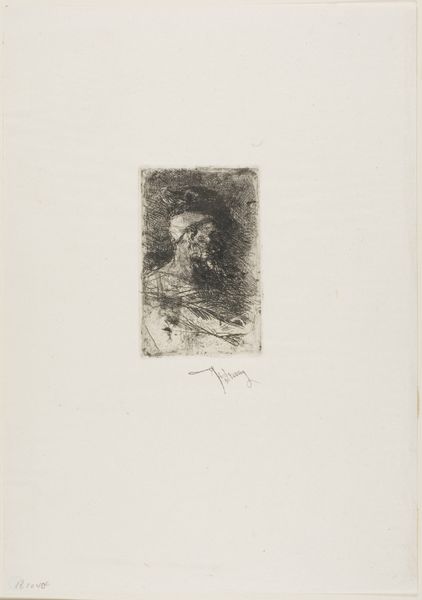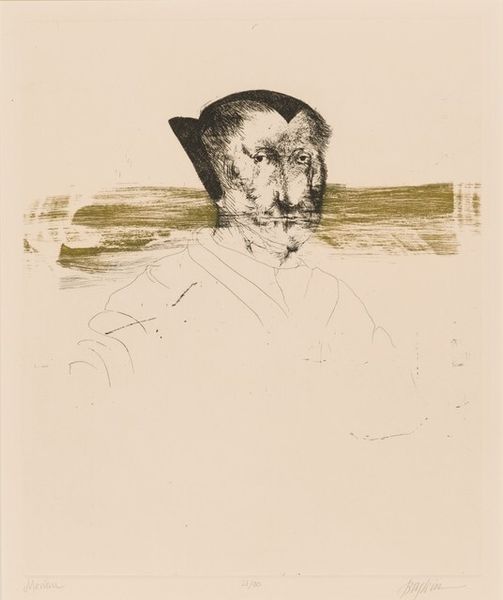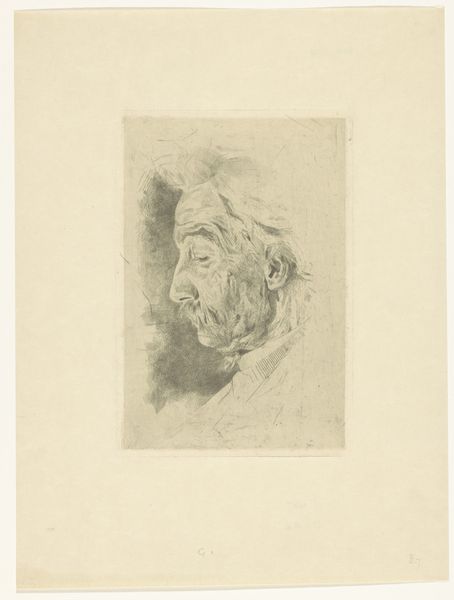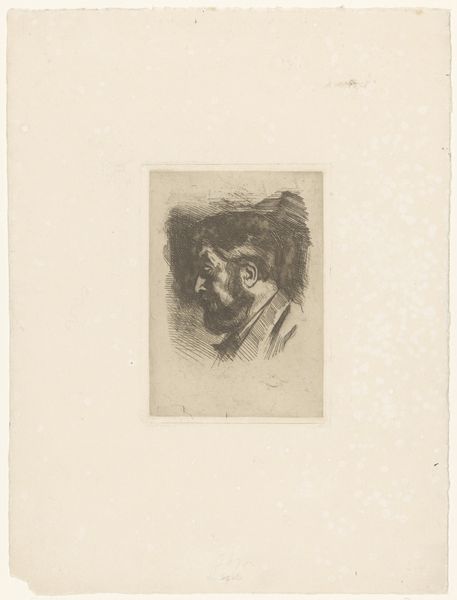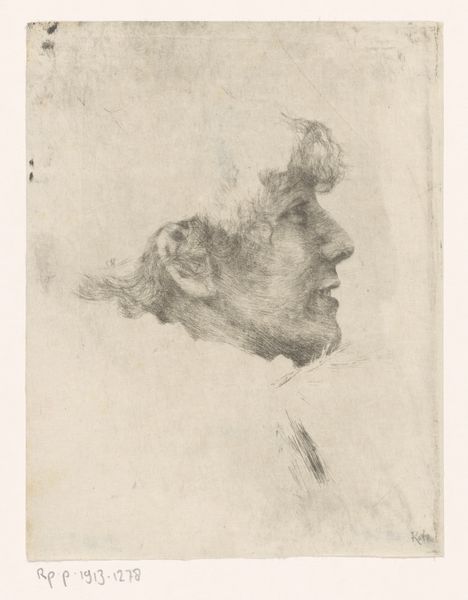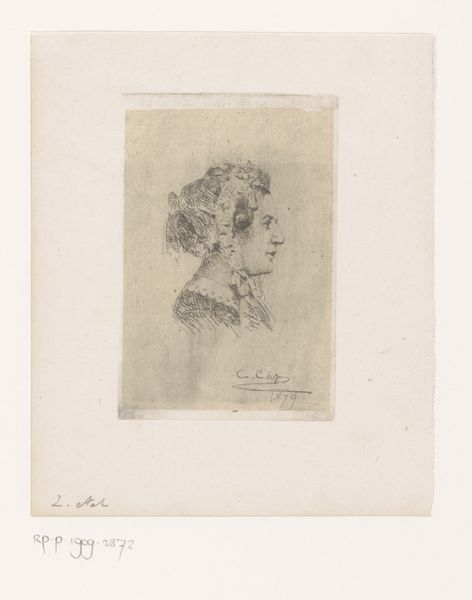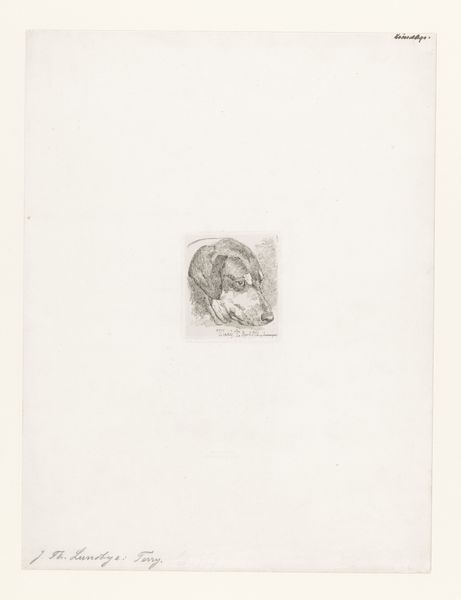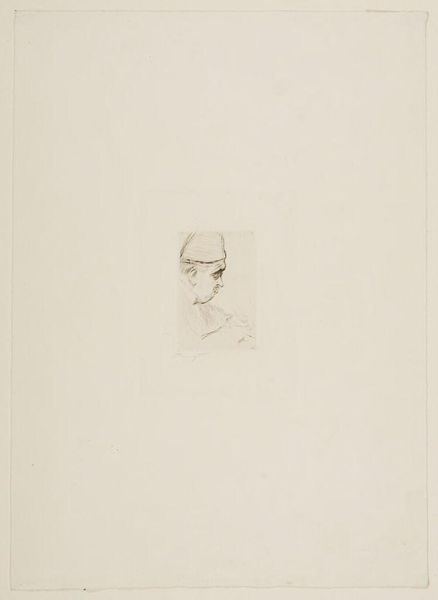
drawing, print, paper, graphite
#
portrait
#
pencil drawn
#
drawing
# print
#
paper
#
pencil drawing
#
symbolism
#
graphite
Dimensions: 6 15/16 x 6 7/16 in. (17.62 x 16.35 cm) (sheet)19 1/4 x 14 3/16 in. (48.9 x 36.04 cm) (mount)
Copyright: No Copyright - United States
Editor: Here we have a portrait of Odilon Redon by Pierre Bonnard, created in 1902. It’s a graphite drawing, almost a sketch really, printed on paper. It's rather modest in scale. I’m immediately struck by its simplicity. It's not grandiose at all. What stands out to you? Curator: For me, the historical context is key. Bonnard making a portrait of Redon in 1902 tells us a lot about the artistic landscape at the time. Redon, a symbolist, was at the height of his influence, bridging the gap between Impressionism and the avant-garde. Bonnard, himself transitioning from more decorative work to intimate, domestic scenes, acknowledges Redon's importance by depicting him. Editor: So, this portrait becomes almost like an endorsement? A younger artist acknowledging a master? Curator: Precisely. It also reflects the increasing institutionalization of avant-garde art. By 1902, Symbolism wasn't as radical as it once was; Redon was being collected and exhibited. Bonnard’s choice to create this portrait signals this shift. The portrait itself, in its unassuming nature, fits the Symbolist aesthetic of conveying inner worlds. Notice how the eyes seem averted, lost in thought. Editor: I see. It’s not about outward appearances, but something more internal. Does the medium - graphite on paper - play into this? Curator: Absolutely. Graphite allows for a delicate, almost ephemeral quality, suggesting the fleeting nature of inner states and memories. How does understanding this shift influence your perception of the piece? Editor: I appreciate it more knowing the back story, and how social forces impact the image. Thanks! Curator: Indeed, it demonstrates the complex dialogue between artist, subject, and the evolving art world.
Comments
No comments
Be the first to comment and join the conversation on the ultimate creative platform.
